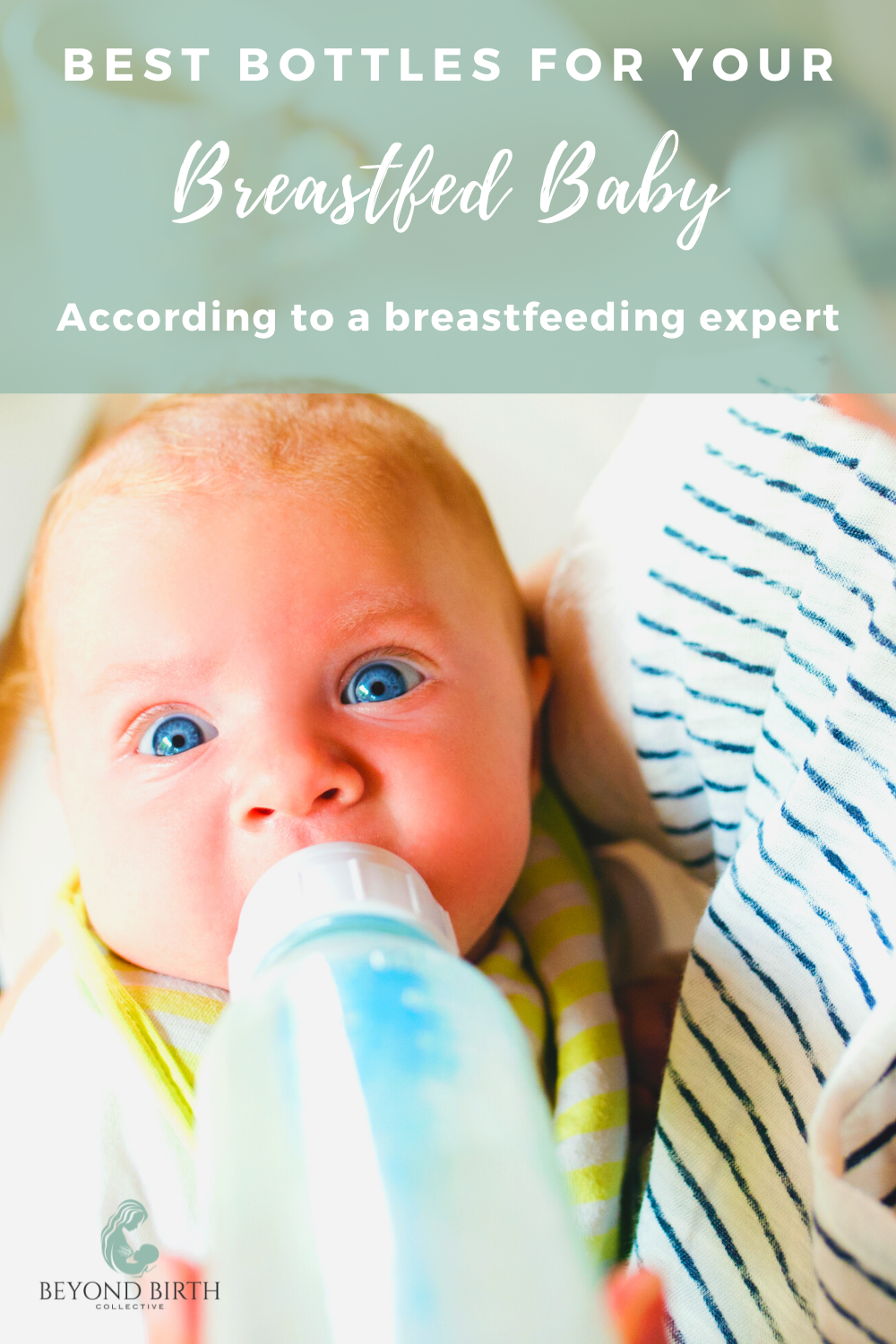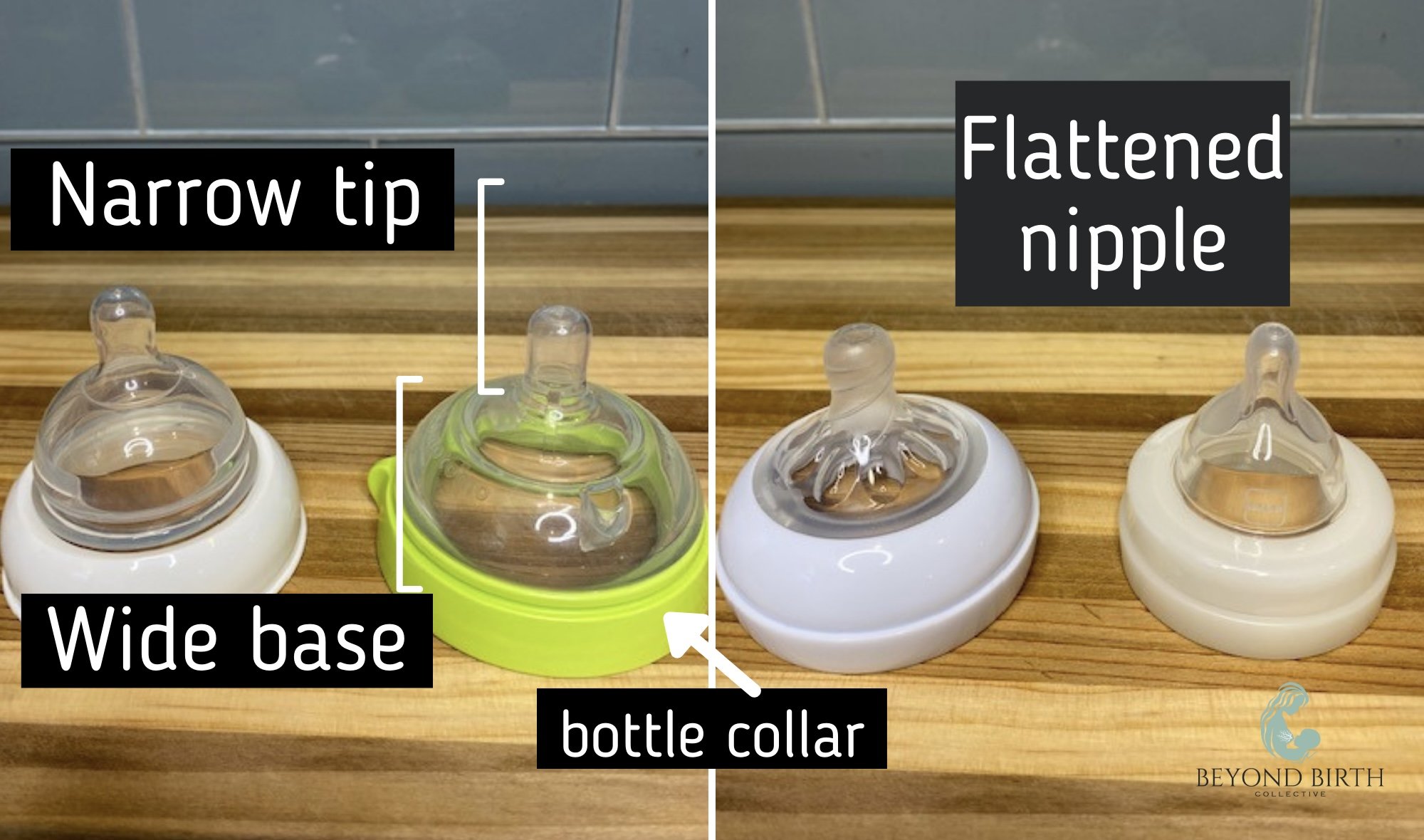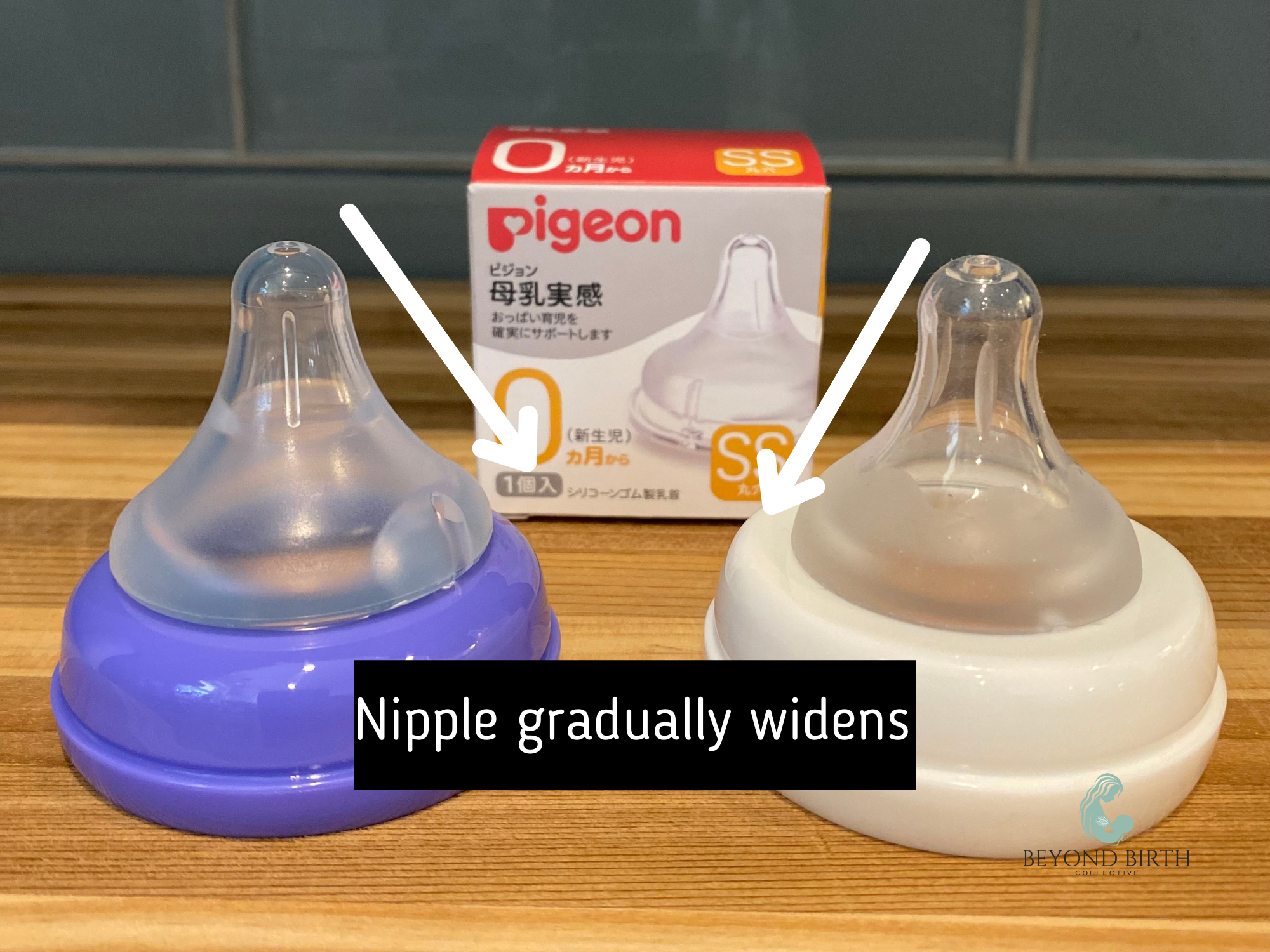Best Bottles for Your Breastfed Baby According to a Breastfeeding Expert
Written by Shea Collier, BSN, RN, CLC, student IBCLC, with peer-review by Nicole Schwartz, BS, IBCLC
*This post contains affiliate links, which means I may receive a small commission, at no cost to you, if you make a purchase through a link on this blog. As an Amazon Associate I earn from qualifying purchases. I would never recommend a product I would not use myself or that I have not vetted.
Which bottle is best for your breastfed baby?
As a new parent, there are so many decisions that need to be made! A common question I get as a lactation consultant is which bottle is best for my breastfed baby?
There are so many different bottles on the market, from anti-colic bottles to bottles with nipples colored and shaped to look like a breast. How in the world do you know “what’s best?” I’m breaking it all down for you in this post!
But first, the real truth: There is no such thing as a bottle that functions just like breastfeeding. According to this study, babies who are exclusively breastfeeding have a different pattern of sucking than babies who are exclusively bottle feeding. There are many claims that are made that will try to get you to believe that this bottle or that one will be just like breastfeeding.
Many bottles are made to “look” like a breast or marketed to be closest to breast, but that does not mean they will function in the baby’s mouth like a breast.
So when looking for a bottle for a breastfeed baby this is what to look for:
Will this bottle be supportive of the way my baby eats at the breast (wide open mouth taking in more than just the nipple tip)?
Will this bottle allow my baby to properly coordinate sucking, swallowing, and breathing?
Will the flow rate of this bottle most closely match the flow rate of milk from my breasts (we don’t want to see milk leaking from baby's mouth or have them choking)?
Just like with anything with babies and kids, it’s not one size fits all. My recommendations are based on my experience as a lactation consultant and breastfeeding expert, and my picks are based on asking the 3 questions I mention above.
Narrow nipple tip to an abrupt wide base
These bottle nipples start off narrow and abruptly widen or have a flattened nipple shape. These nipple shapes can make it harder for your breastfed baby to get an ideal latch on the bottle.
These nipples are wide at the base of the nipple (the part near the bottle collar) and tend to be the bottles we associate with looking like a breast. A new parent may choose one of these bottles based on the look and shape- if it looks like a breast it acts as a breast, right? Not in this case. While these bottle nipples may look like a breast, they don’t function like a breast.
In most cases, the baby cannot get a deep enough latch on the nipple and the part that gets abruptly wider keeps them from getting that part of the nipple into their mouth- so they end up chomping on the narrow part of the nipple and getting a shallow latch. If the wide part of the nipple is super soft and flexible, the baby’s lips can actually compress that part of the nipple leading to leaking milk and baby sucking in air.
Flattened or creased bottle nipple
If a mom has a flattened or creased nipple when breastfeeding this is a sign of a less than optimal latch. This tells us the baby isn’t getting a deep enough latch and not getting the nipple far enough back in their mouth (your nipple should go all the way back to the junction of your baby’s hard and soft palate). Having a flattened bottle nipple can encourage more shallow latching and we never want your nipples to come out looking like a pancake!
Gradual increase in width of nipple
These nipples widen gradually, allowing your breastfed baby to get an ideal latch on the bottle nipple.
This shape is ideal for the breastfed baby because this allows and encourages the baby's lips to flange out correctly and for the baby to get a good portion of the nipple (not just the tip) in their mouth. We want to see a nice wide open mouth with a good seal on the bottle just as we do on the breast.
Three brands that are a great example of this nipple shape are the Lansinoh, Pigeon, and Evenflo Balance:
TIP: Make sure you watch this video I posted on Instagram for a quick tutorial on how to properly use the Lansinoh bottle and nipples!
Narrow nipple down to the bottle collar
So these bottles can be another great option, especially if your baby still struggles to use the gradual sloped nipples I discuss above. I especially like to use these for preterm babies or babies that are struggling with some oral motor function (whether it’s because of a tongue tie or other structural or neurological reason). The goal when using these bottles is to have the entire nipple in the baby's mouth. Essentially, your baby’s lips should be touching and flanging out on the bottle collar (the plastic piece that attaches the nipple to the bottle).
The Dr. Brown’s Natural Flow Standard is a great example. This bottle comes with the level one, slow flow nipples, which still may be too fast for some babies. If that is the case I recommend going to the preemie nipple in these bottles which is a slower flow nipple.
Pigeon Nipples
So, these aren’t a bottle (but you can get them with the Pigeon bottle that I mentioned above) but I wanted to mention them in this post. Not only do they have the gradual shape that I recommend, but they are also compatible with lots of other bottle brands, and that’s pretty unique. If you want to try out this nipple and have any of these bottles you don’t have to buy brand new bottles, just the nipple!
Pigeon nipples can be used with Lansinoh, Nanobébé Flexy, Spectra, Joovy Boob Baby, MAM, Mixie Baby, Motif, NUK Smooth Flow, Philips Avent Original, Hygiea, Maymom wide-mouth, Evenflo Balance +, and Pigeon bottles.
Nipple flow rate
Let’s talk about nipple flow while we’re on the subject! As your baby is first introduced to a bottle, I recommend starting with a slow-flow nipple (usually size 0 in most brands) and using the paced-bottle feeding method. Keep in mind that nipple flow rates are not standard. That means a slow-flow for one brand might be a medium flow for another. This study looked at nipple flow rates of popular brands and compared them.
I suggest using a slow-flow nipple so that your baby doesn’t get used to a faster flow on the bottle, which can increase frustration at the breast because they have to work just a little harder at the breast to get a letdown and the milk to start flowing. Also, the rate at which milk leaves your nipples will not change from the time they are one month to the time they are 6 months (and so on). Your baby may get more efficient at feeding and eat quicker but the flow rate doesn’t change. Babies are smart. They want to do the least amount of work for their food!
The paced bottle-feeding method allows the baby to have control over the feed, just like in breastfeeding, and prevents overfeeding your baby.
A combination of the best bottle nipple shape, flow rate, and paced bottle feeding should help you and your baby support their breastfeeding skills as closely as possible when bottle feeding!
If you are having difficulty with bottle feeding and/or breastfeeding, please seek the support of a lactation consultant. We offer in-person support if you are in the Atlanta area or virtual support no matter what state or country you live!









